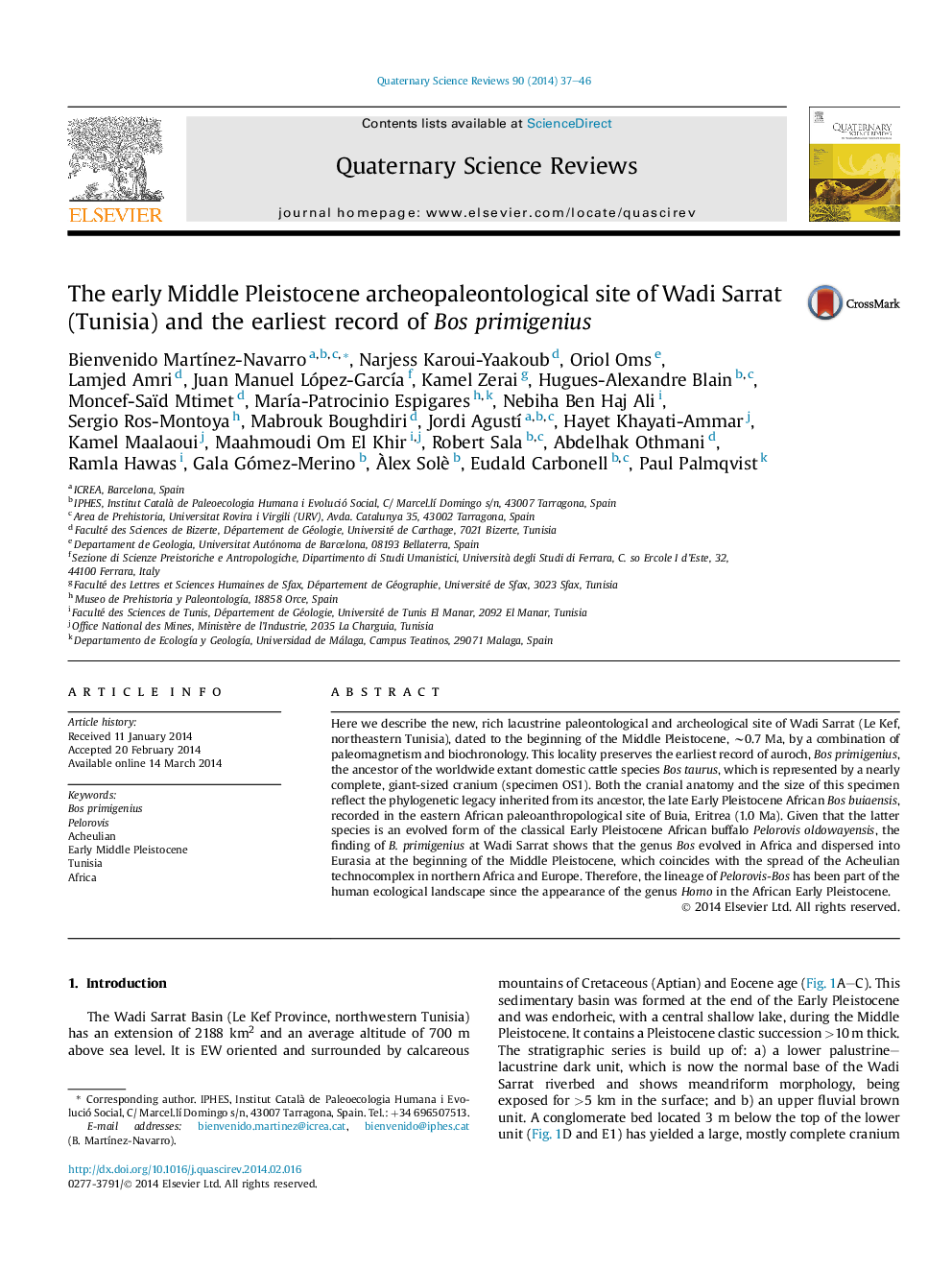| کد مقاله | کد نشریه | سال انتشار | مقاله انگلیسی | نسخه تمام متن |
|---|---|---|---|---|
| 4736545 | 1640844 | 2014 | 10 صفحه PDF | دانلود رایگان |
Here we describe the new, rich lacustrine paleontological and archeological site of Wadi Sarrat (Le Kef, northeastern Tunisia), dated to the beginning of the Middle Pleistocene, ∼0.7 Ma, by a combination of paleomagnetism and biochronology. This locality preserves the earliest record of auroch, Bos primigenius, the ancestor of the worldwide extant domestic cattle species Bos taurus, which is represented by a nearly complete, giant-sized cranium (specimen OS1). Both the cranial anatomy and the size of this specimen reflect the phylogenetic legacy inherited from its ancestor, the late Early Pleistocene African Bos buiaensis, recorded in the eastern African paleoanthropological site of Buia, Eritrea (1.0 Ma). Given that the latter species is an evolved form of the classical Early Pleistocene African buffalo Pelorovis oldowayensis, the finding of B. primigenius at Wadi Sarrat shows that the genus Bos evolved in Africa and dispersed into Eurasia at the beginning of the Middle Pleistocene, which coincides with the spread of the Acheulian technocomplex in northern Africa and Europe. Therefore, the lineage of Pelorovis-Bos has been part of the human ecological landscape since the appearance of the genus Homo in the African Early Pleistocene.
Journal: Quaternary Science Reviews - Volume 90, 15 April 2014, Pages 37–46
